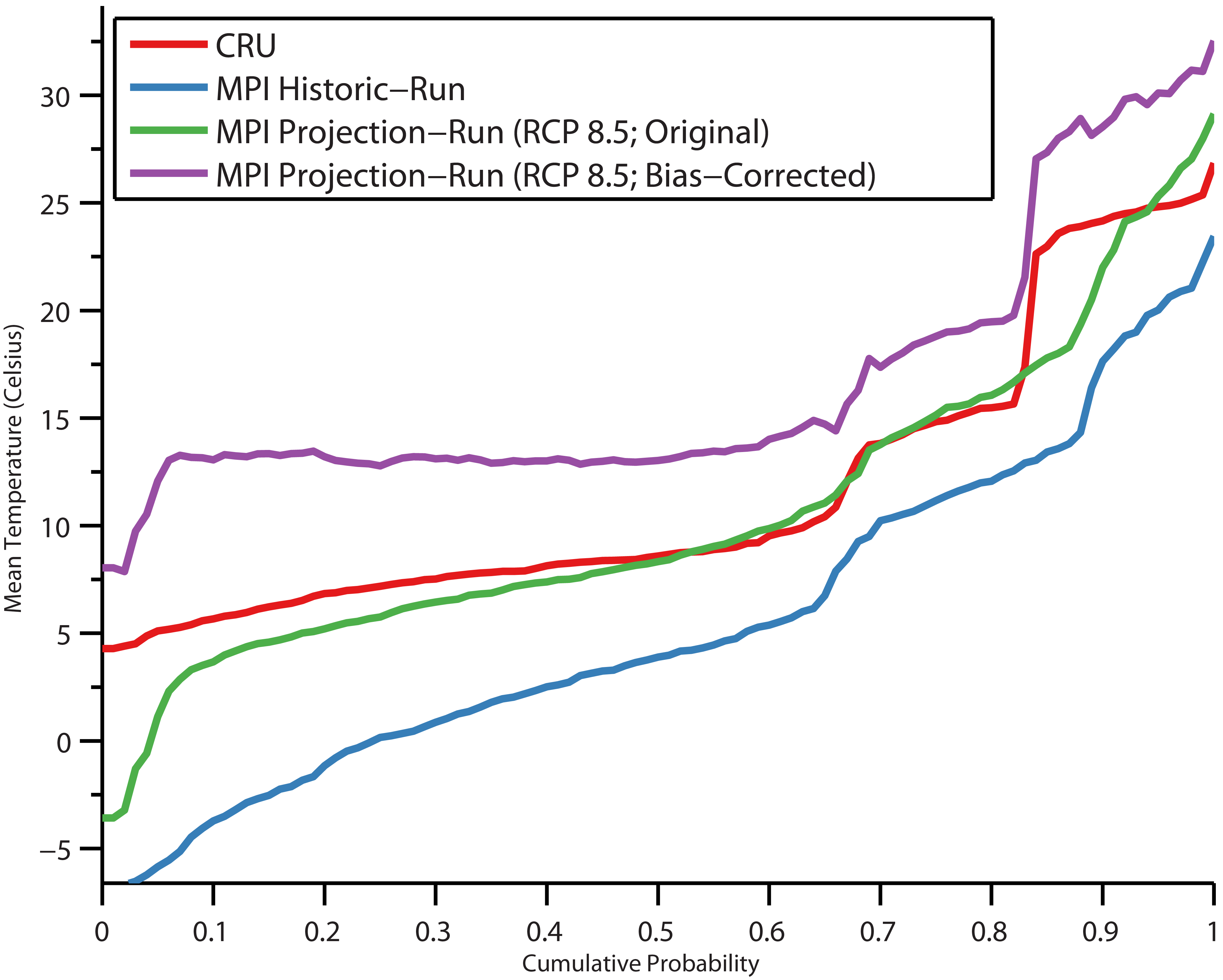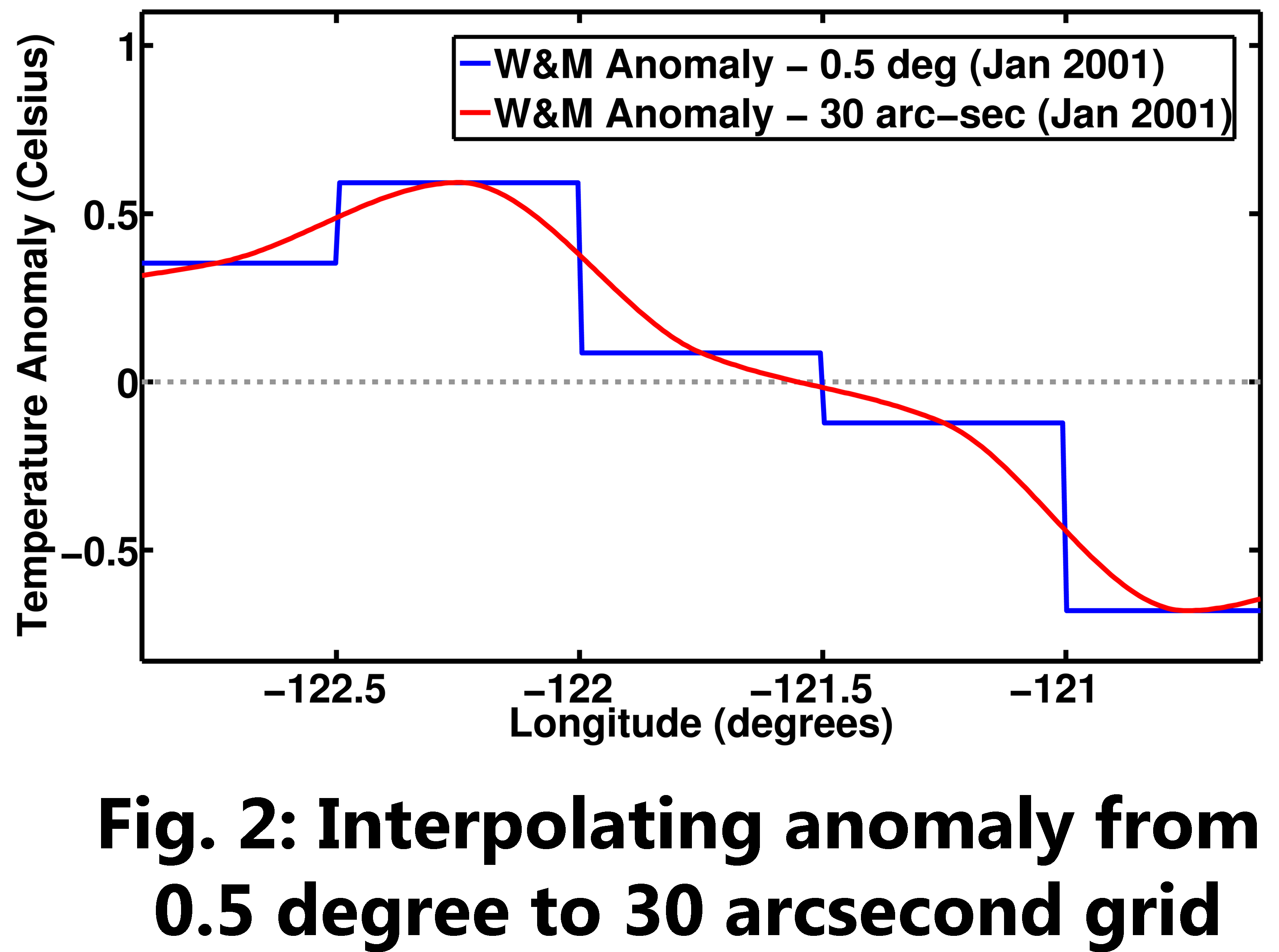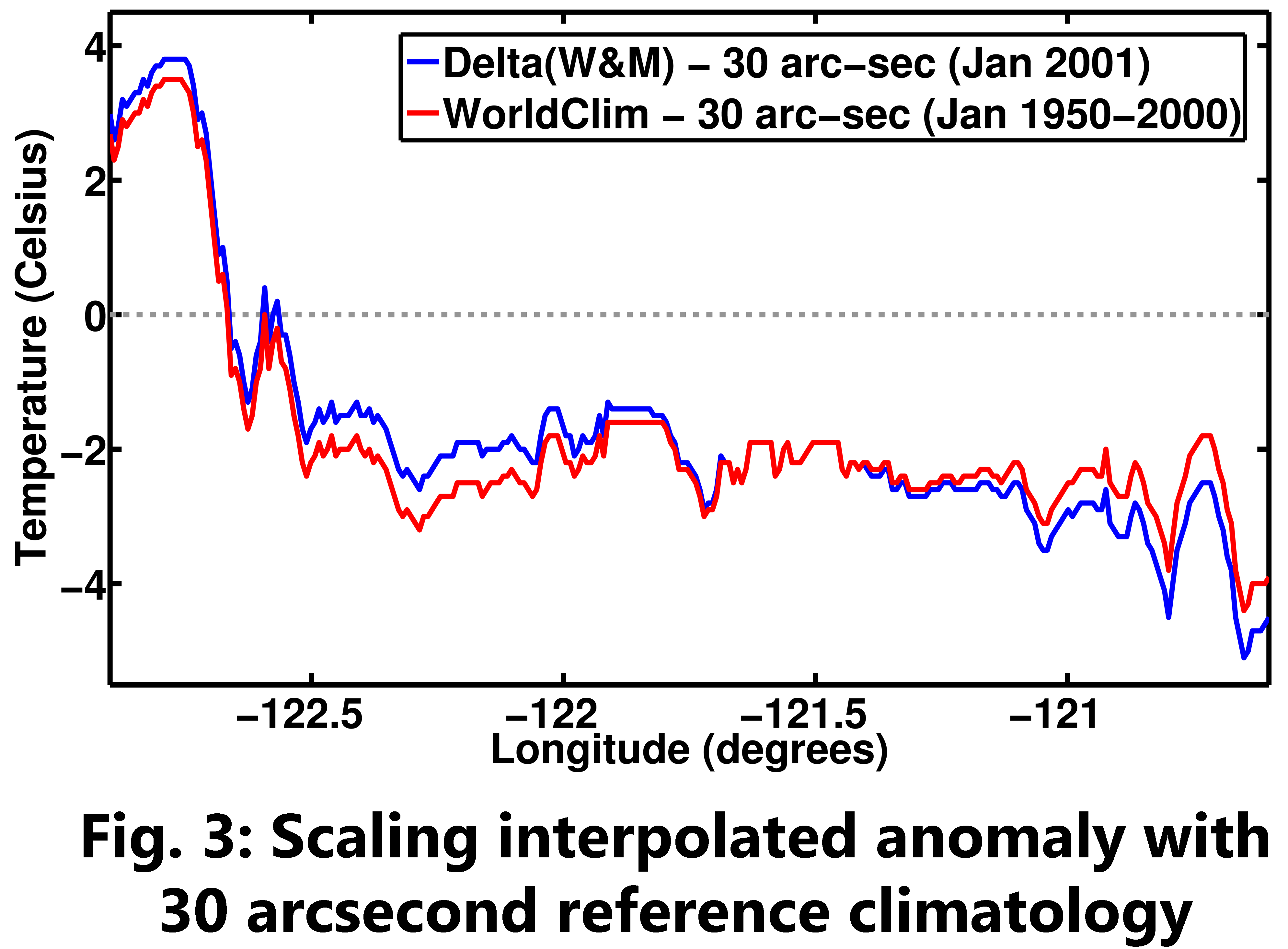A paper describing this implementation of the Delta downscaling method and analysis of the resulting 30-arcsecond time-series grids for six globally-distributed test regions is available through the International Journal of Climatology.
Summary of Delta Downscaling Method (for Hindcasting):
The delta downscaling method, as implemented herein, requires a 0.5 degree monthly time-series dataset and a 30 arcsecond climatology dataset. As time-series input the scripts are currently setup to use monthly time-series from Willmott & Matsuura (W&M), the Climate Research Unit (CRU), and the Global Precipitation Climatology Centre (GPCC; for precipitation only). For the 30 arcsecond climatology, the script requires that WorldClim be used.
The first step of the Delta downscaling method is to create a climatology from the 0.5 degree time-series dataset for the same years used in producing the 30 arcsecond climatology. Since WorldClim is produced using the years 1950-2000, this means that a climatology must be produced from the 0.5 degree time-series dataset for the years 1950-2000. The climatologies are for each month of the year (i.e. in total 12 such climatologies are constructed). If temperature grids are being downscaled, a 0.5 anomaly is calculated as the difference between the 0.5 degree time-series grid and 0.5 degree climatology; for precipitation the anomaly is the ratio instead of difference. Each 0.5 degree anomaly grid corresponds with a time-series element in the original 0.5 degree time-series dataset. The 0.5 degree anomaly grids are next interpolated using piecewise cubic Hermite polynomial interpolation to the 30 arcsecond grid of the WorldClim dataset. The resulting 30 arcsecond anomalies are then scaled by the 30 arcsecond WorldClim climatology for the corresponding month (i.e. if the anomaly is for September 1990, it is scaled by the September WorldClim climatology). The scaling step is effectively the reverse of the anomaly creation step. Therefore, addition is used for temperature and multiplication is used for precipitation. The resulting Delta downscaled grids are labeled “Delta(_input_time-series_).” For example, Delta(W&M) refers to Delta downscaled grids produced using the 0.5 degree W&M time-series as input.
An additional option in the Delta downscaling script is to bias correct each of the resulting time-series grids using Global Historical Climatology Network (GHCN) station data available for each time-step within the region being downscaled. The bias is calculated between the GHCN and Delta data at each station location, then these station biases are extrapolated to the full 30 arc-second grid using a Shepard's inverse distance weighting scheme. Each time-series bias grid is then subtracted from the corresponding Delta downscaled grid, resulting in a dataset of bias-corrected Delta downscaled grids.
Additional Bias-Correction When Downscaling Global Climate Model Data:
When global climate model (GCM) data are being downscaled, the downscaling procedure produces two time-series outputs, one that is Delta downscaled without bias-correction and one where a quantile-mapping bias-correction procedure is first applied to the GCM data. The quantile mapping bias-correction procedure compares the cumulative districution function of a GCM historic-run to that of a gridded observational dataset, e.g. CRU. A map is produced from the GCM CDF to the CRU CDF on a 3 by 3 pixel basis, which is then applied to all GCM projection-run data before implementing the Delta method.

Example of Delta Downscaling Temperature for Jan 2001:


